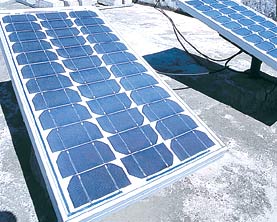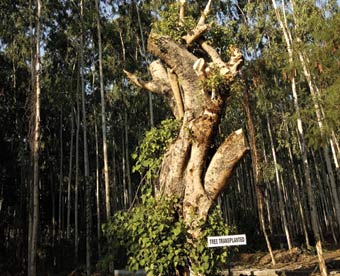e-Choupal and Solar
Energy
ITC e-Choupal has creatively leveraged information technology to set up a
meta-market in favour of India's small and poor farmers, who would otherwise continue to
operate and transact in ‘unevolved’ markets.
e-Choupal also sidesteps the value-sapping problems caused by fragmentation, dispersion,
heterogeneity and weak infrastructure.
ITC takes on the role of a Network Orchestrator in this meta-market by stitching
together an end-to-end solution. The solution simultaneously addresses the viability
concerns of the participating companies by virtually aggregating the demand from thousands
of small farmers, and the value-for-money concerns of the farmers by creating competition
among the companies in each leg of the value chain.

Several problems were encountered while setting up and managing the
‘e-Choupals’, or Internet kiosks that give farmers access to critical
information related to their farm produce through dedicated websites. These related
primarily to infrastructural inadequacies, including power supply, telecom connectivity
and bandwidth, apart from the challenge of imparting skills to first time Internet users
in remote and inaccessible areas of rural India.
ITC has largely overcome the problems of power supply by investing in alternative
energy. Two solar panels of 40 Watts have been installed at every
e-Choupal, which requires approximately 80 Watts of power for operating the computer and
for satellite connectivity. Free surplus power created helps in lighting up the room of
the Sanchalak or lead farmer who operates the e-Choupal. This has resulted in, among other
conveniences, better lighting for rural children who now use it for studies.
|
 |
|
ITC Close to Becoming a Carbon
Positive Corporation |
ITC endeavours to be a carbon positive corporation. ITC’s efforts in the field of
energy conservation, its use of carbon neutral fuels, sourcing of renewable energy and
large scale tree plantations through social and farm forestry have resulted in ITC
sequestering 85.6% of the Carbon Dioxide (CO2) emitted by its operations.
The total CO2 released by ITC units was 4.5% more than the previous year.
This can be primarily attributed to the newly acquired Kovai paperboards unit, the
inclusion of hotel properties due to the merger of ITC Hotels with ITC and the growth in
the Paper and Hotels businesses. ITC’s farm and social forestry plantations, covering
29,230 hectares (19,500 hectares till 2003-04), enabled sequestration of 85.6% of
greenhouse gases emitted during the year, up from 31% in 2003-04.
Intense R&D has resulted in the productivity of these plantations doubling in the
last few years. A study by experts from the Indian Institute of Science, Bengaluru, has
shown that the above & below ground biomass contributes 71% carbon sink additional to
the CO2 sequestered by pulpable wood.
|
|
Unit |
2002-03 |
2003-04 |
2004-05 |
|
| CO2 released |
|
|
|
|
| (Manufacturing & Freight) |
Kilotons |
1,188 |
1,013 |
1,058 |
|
| CO2 sequestered |
Kilotons |
216 |
311 |
906 |
|
| CO2 sequestered |
Percentage |
18 |
31 |
86 |
|
| All figures rounded off to the nearest digit |

|
|